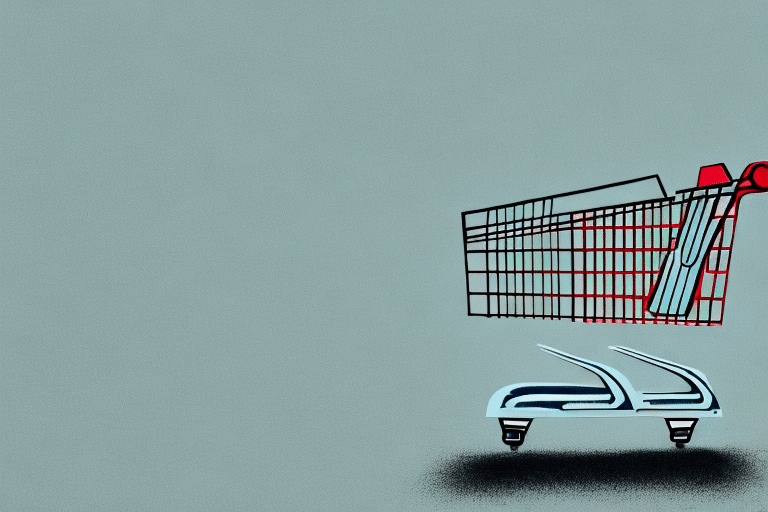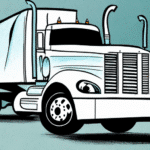Abandoned shopping carts are a pervasive issue in urban areas worldwide, often found strewn across sidewalks, parking lots, and even infiltrating waterways like streams and rivers. According to recent studies, millions of shopping carts are lost or stolen annually, contributing to environmental degradation, economic losses for retailers, and increased burdens on local communities. While shoppers may view them merely as an inconvenience, the repercussions of abandoned carts extend far beyond visual clutter. This article delves into the multifaceted impact of abandoned shopping carts, examining environmental consequences, financial costs to retailers and communities, legal ramifications, and effective strategies to mitigate this problem. We will also explore technological innovations and community initiatives aimed at reducing cart abandonment and promoting sustainable practices.
Environmental Impact of Abandoned Shopping Carts
Abandoned shopping carts significantly contribute to environmental degradation. According to the Environmental Protection Agency (EPA), discarded carts often end up in waterways, posing threats to wildlife by entangling animals and disrupting natural habitats. A study published by Nature highlighted that the plastic components of shopping carts can take over 50 years to decompose, leading to long-term ecological damage.
Effects on Wildlife and Ecosystems
Wildlife can become entangled in abandoned carts, leading to injuries or fatalities. Additionally, carts can disrupt the flow of waterways, increasing the risk of flooding and altering local ecosystems. The physical presence of carts in natural habitats can also inhibit the growth of vegetation and alter the landscape.
Pollution and Waste Management Challenges
Abandoned shopping carts contribute to litter and pollution, complicating waste management efforts. They are often made of durable materials like metal and plastic, making them resistant to natural degradation. This persistence in the environment exacerbates the pollution problem, requiring more resources for cleanup and waste management.
Economic Costs of Abandoned Shopping Carts to Retailers and Communities
The financial burden of abandoned shopping carts extends to both retailers and local communities. Retailers face substantial costs associated with replacing lost or stolen carts. According to IBISWorld, the annual loss due to missing shopping carts in the United States is estimated in the tens of millions of dollars.
Impact on Retailers
Retailers incur expenses not only from the loss of carts but also from maintenance and retrieval operations. The cost of replacing carts can be significant, especially for large retail chains with extensive store networks. Additionally, the presence of abandoned carts can detract from the shopping experience, potentially reducing customer traffic and sales.
Community Costs
Local communities bear the costs of cleaning up abandoned carts, which can strain municipal budgets. Funds allocated for waste management and public maintenance are diverted to address the cart problem, potentially impacting other community services. Moreover, abandoned carts can lower property values and deter investment in affected areas.
Legal Implications of Abandoned Shopping Carts
Many municipalities have enacted ordinances to regulate the removal and abandonment of shopping carts. Failure to comply with these regulations can result in legal consequences for both retailers and individuals.
Municipal Ordinances and Regulations
Local laws often require retailers to implement measures that prevent unauthorized removal of shopping carts, such as electronic tracking systems or physical barriers. Violating these ordinances can lead to substantial fines and legal action. For example, several cities impose fines on retailers that do not secure their shopping carts adequately.
Consequences for Individuals
Individuals caught removing shopping carts without authorization may face fines or other penalties. Additionally, the improper disposal of carts can result in charges related to littering or environmental damage, depending on local laws and the extent of the offense.
Technological Innovations Addressing Cart Abandonment
Advancements in technology have provided retailers with new tools to combat cart abandonment. These innovations aim to reduce the incidence of lost or stolen carts through tracking, deterrence, and incentivization.
GPS-Enabled Tracking Systems
GPS technology allows retailers to monitor the location of their shopping carts in real-time. This enables swift retrieval of abandoned carts, minimizing their presence in public spaces. Such tracking systems enhance inventory management and reduce losses.
Electronic Deterrents
Electronic locks and alarms are employed to deter the unauthorized removal of carts. Some systems activate small electric shocks when carts are taken beyond a designated perimeter, discouraging theft and abandonment. While effective, these deterrents must be carefully managed to ensure customer safety and compliance with regulations.
Incentive Programs
Implementing incentive-based programs that reward customers for returning carts can significantly reduce abandonment rates. Mobile apps and digital tracking facilitate the distribution of rewards, such as discounts or loyalty points, encouraging responsible cart behavior.
Collection, Recycling, and Disposal of Abandoned Carts
Once collected, abandoned shopping carts undergo processes aimed at minimizing their environmental footprint and economic impact.
Cleaning and Maintenance
Collected carts are typically cleaned to remove debris and contaminants. This maintenance process restores carts to a usable condition before returning them to retailers or recycling facilities. Proper cleaning is essential for health and safety standards, especially when carts are reused.
Recycling and Repurposing
Many components of shopping carts, such as metal frames and plastic parts, can be recycled. Partnerships with recycling firms ensure that materials are repurposed, reducing waste and conserving resources. Effective recycling programs can significantly decrease the environmental impact of discarded carts.
Disposal Practices
In cases where recycling is not feasible, carts are disposed of at designated waste management facilities. Proper disposal methods are essential to prevent environmental contamination and comply with local regulations. Some municipalities offer specific guidelines for the disposal of large items like shopping carts.
Strategies for Retailers to Prevent Cart Abandonment
Retailers can implement a variety of strategies to minimize the rate of cart abandonment, benefiting both their bottom line and community well-being.
Redesigning Store Layouts
Optimizing the physical layout of stores and parking areas can reduce the distance customers must travel to return their carts. Clearly marked cart return areas and strategically placed barriers can make it more convenient for customers to return carts responsibly.
Incentivizing Cart Returns
Offering incentives such as discounts, loyalty points, or entry into prize draws encourages customers to return carts. Programs that reward responsible behavior have proven effective in increasing cart return rates.
Implementing Electronic Locks and Barriers
Installing electronic locks or physical barriers makes it harder for carts to be removed from store premises. Only authorized personnel can release carts, reducing the likelihood of abandonment or theft.
Enhancing the Online Shopping Experience
By improving their online platforms, retailers can reduce the need for physical carts. Features such as streamlined checkout processes, mobile optimization, and personalized recommendations minimize the reasons for customers to abandon carts.
Utilizing Data Analytics
Analyzing data on cart abandonment patterns helps retailers identify underlying causes and address them effectively. Insights gained from customer behavior can inform targeted strategies to enhance cart return rates and overall shopping experience.
The Psychology and Ethics of Cart Abandonment
Understanding the psychological factors behind cart abandonment can inform more effective prevention strategies, while ethical considerations highlight the personal responsibility of shoppers.
Psychological Drivers of Cart Abandonment
Factors such as convenience, perceived effort, and social responsibility influence whether customers return their carts. Research suggests that customers are more likely to return carts when they feel a sense of responsibility or see others doing the same.
Ethical Considerations
Shoppers often face ethical dilemmas when encountering abandoned carts. Some may choose to return carts to promote community well-being, while others might keep carts for personal use, particularly if they are in good condition. Retailers and communities benefit ethically when customers adopt responsible behaviors, reducing the negative impacts of cart abandonment.
Conclusion
Abandoned shopping carts present significant environmental, economic, legal, and ethical challenges. Addressing this issue requires a multifaceted approach involving technological innovation, strategic retailer practices, proactive community engagement, and a deeper understanding of shopper behavior. By implementing effective solutions and fostering a culture of responsibility, retailers and communities can mitigate the adverse effects of abandoned shopping carts, promoting sustainable and orderly urban environments.






















